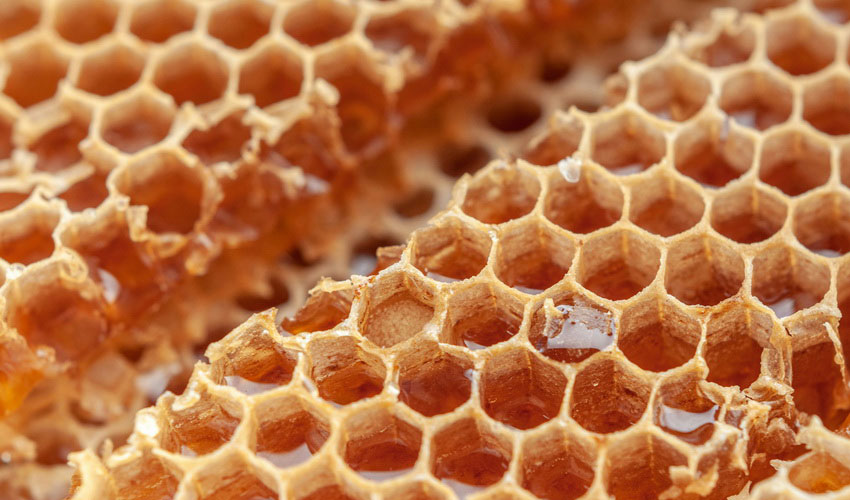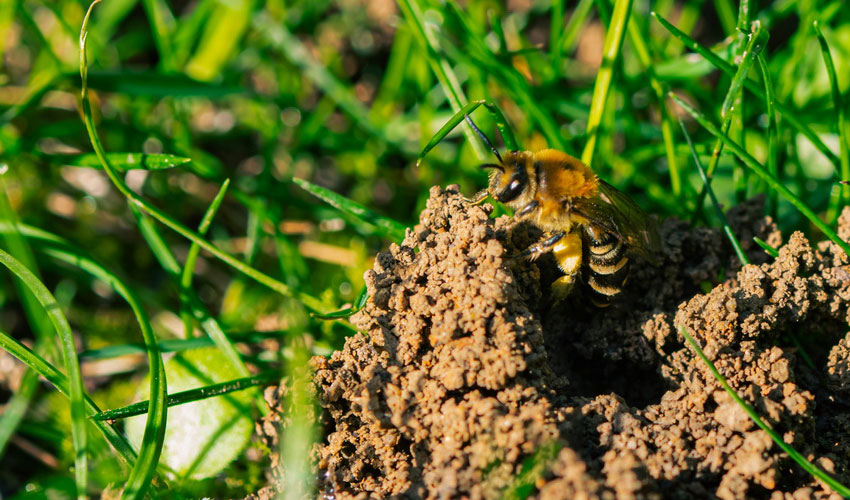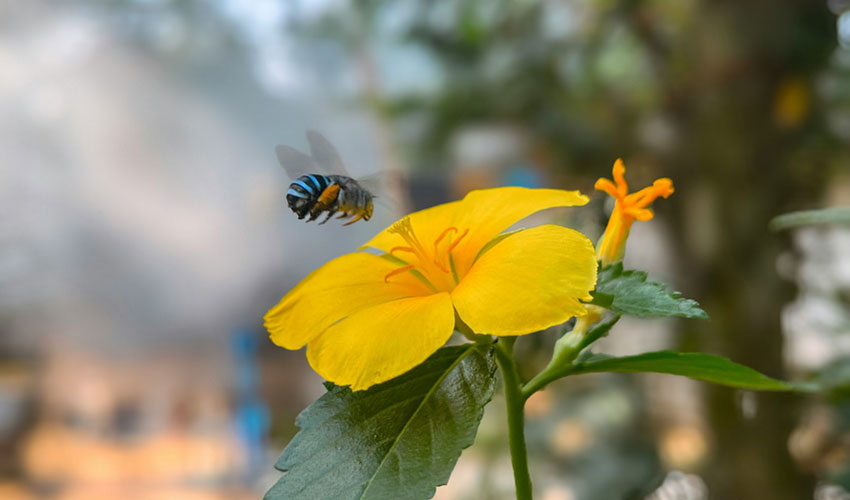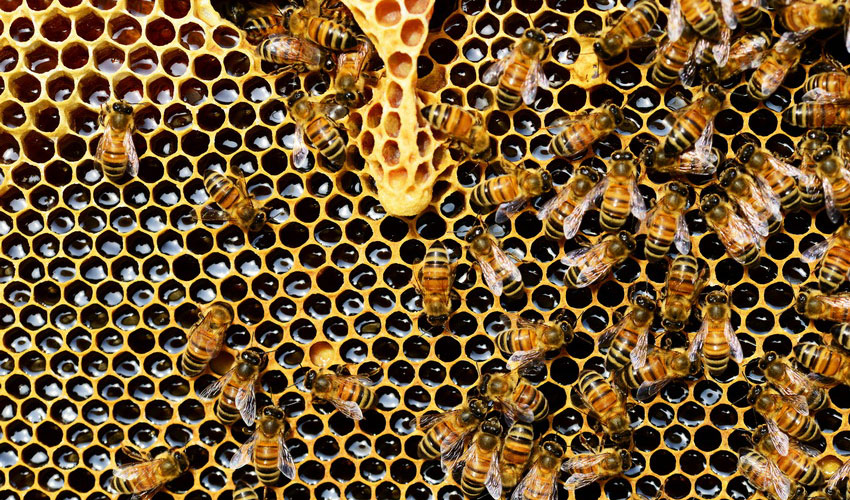Bee Populations & Land Management
As I reflect on the complex web of life that sustains our planet, it becomes painfully clear to me just how vital Bees are to our environmental health and food security. These small yet mighty creatures play an indispensable role in pollination, a process that not only supports the growth of a vast array of flowering plants but also directly contributes to the agricultural bounty we often take for granted. From the vibrant fruits and vegetables that fill our grocery aisles to the nuts that enrich our diets, bees are the unsung heroes behind many of our favourite foods. I find it awe-inspiring that one out of every three bites of food we eat is made possible by their diligent work.
Moreover, beyond the tangible benefits they provide, Bees are a crucial part of maintaining biodiversity in ecosystems. They help to sustain the plants that provide habitats and food for countless other species, contributing to the delicate balance of nature that we all depend on. The alarming decline in Bee populations due to habitat loss, pesticide use, and climate change fills me with concern, as it signifies more than just the loss of these extraordinary pollinators, it's a warning signal about the health of our environment as a whole.

Recognising the immense importance of Bees has galvanised my passion for conservation efforts and sustainable practices. It reminds me that our choices, from the food we consume to the gardens we tend, can have a profound impact on their survival. I feel a deep responsibility to advocate for these remarkable insects and to raise awareness about their plight. By understanding the critical role Bees play in our lives, I believe we can inspire others to join in the fight to protect them and, ultimately, our planet. At the conclusion of this article, I'll present some creative ideas to enhance your garden's appeal to Bees.
The Harmonious Relationship Between Bees & Agriculture
If you have fond memories of your elementary school days, you might recall that Bees hold a special place in our ecosystem. Revered as one of Earth’s most essential pollinators, these industrious insects play a crucial role in the world of agriculture. Through their tireless efforts, they facilitate the transfer of pollen between flowers, enhancing crop yields and nurturing the growth of fruits and vegetables we depend on. Moreover, they create the delightful, golden nectar that we know as honey, a product that fuels a staggering global market worth billions. When we examine the broader picture, it’s evident that our society and culture are intricately woven into an enduring love story between Bees and agriculture. The advancement of human civilisation has relied heavily on agricultural practices, which in turn are deeply reliant on the tireless work of these extraordinary pollinators. Without their vital contributions, it’s hard to imagine where humanity might stand today, perhaps still lingering in the shadows of our Neanderthal ancestors, far away from the sophisticated societies we now inhabit. Yet, as is often the case with great tales, this narrative is not devoid of complexity. Beneath the surface of our admiration for Bees lies a tangled web of challenges that threaten both them and us. It is essential to delve into these intricacies and confront the sticky truths that emerge from our relationship with these small but mighty creatures. Understanding this connection is crucial, not only for the survival of Bees but also for the future of human society as a whole. Our fates are intertwined, and now is the time to recognise the urgency of protecting both this invaluable species and the agricultural systems we have built around them. Let’s explore the nuances of this critical symbiosis and confront the realities that lie ahead.
For at least nine millennia, bees have woven themselves into the very fabric of human sustenance and culinary traditions. Their history with us stretches back to the dawn of civilisation, where they found their place in ancient cave paintings and medicinal manuscripts, underscoring their significance in our lives. Beyond their sweet gift of honey, these remarkable insects perform an essential role as pollinators, tirelessly working to sustain a vast array of plant species, well over a thousand types. From staples like potatoes, onions, and peppers, to the vibrant hues of sunflowers and the refreshing crispness of cucumbers and watermelons, Bees are behind the scenes, making it possible for many of the foods we cherish to flourish. It’s not just an exaggeration to say that the vast majority of meals we enjoy are thanks to these hardworking little creatures. The partnership between Bees and agriculture is as vital today as it ever was, with farmers investing millions annually to rent hives and ensure their crops are pollinated successfully. In 2016 alone, Bees were instrumental in contributing a staggering $24 billion to U.S. agriculture. Furthermore, they produced an impressive 161.8 million pounds of raw honey, a testament to their ceaseless dedication and productivity. These industrious pollinators truly don’t know how to take a break, continuously playing a pivotal role in both our diets and our economy, a reminder of the incredible bond we share with the buzzing world around us.

How Do Bees Work?
In the bustling tapestry of nature, a Bee embarks on a vital mission as it flits from one vibrant flower to another, gathering nectar and pollen with deliberate precision. This enchanting dance occurs not only in the wild, where nature thrives in its untamed glory, but also within carefully tended farm fields, where human hands nurture the land to yield bountiful harvests. As the Bee explores the intricate blossoms, it brushes against the delicate stamen which is the male reproductive organ of the plant. Here, tiny grains of pollen become ensnared in the fine hairs that blanket the Bee's body, each grain a crucial element in the cycle of life. Unbeknownst to the Bee, it becomes an unwitting steward of plant propagation, carrying the precious pollen to the next bloom it encounters. Among these diminutive yet industrious creatures, honey Bees stand out as pivotal players in the ecosystem. Remarkably, they are responsible for facilitating the pollination of up to 80% of the crops we cultivate for food. Their tireless work ensures the growth of fruits, vegetables, and nuts, weaving a vital connection between the natural world and our own sustenance. In their quest for nectar, honey Bees do not just gather food for themselves; they nurture entire ecosystems, enabling flora to flourish and, in turn, sustaining the intricate web of life that depends on these vibrant plants.
Bee Crisis - A Looming Catastrophe for Global Agriculture
In 2006, a troubling phenomenon started to emerge, shaking the foundations of agriculture and alarming beekeepers worldwide: entire colonies of Bees began to vanish without a trace. Hives once teeming with life stood eerily empty, leaving behind unanswered questions and a sense of foreboding. Fast forward 14 years, and the mystery of this colony collapse disorder persists, shrouded in uncertainty. Each winter, farmers grapple with the devastating reality of losing upwards of 45% of their Bee populations, a staggering and sorrowful statistic that casts a long shadow over the future of our ecosystem. The implications of a world devoid of Bees are both profound and chilling. These industrious pollinators play a critical role in our agricultural systems, facilitating the growth of countless fruits, vegetables, and nuts that form the backbone of our diet. Without them, the vibrant tapestry of nature and the variety of flavours on our plates would be irrevocably altered. The beauty of blooming flowers and lush gardens, which we often take for granted, relies heavily on the diligent work of these tiny creatures. It is imperative that we take action to safeguard our Bees and the delicate balance they maintain within our environment. We must rally together to understand the root causes of their decline and implement measures that ensure their survival. The fate of our food systems, our landscapes, and ultimately, our lives hangs in the balance. The time to protect our Bees is now! We should do it before their enigmatic disappearance becomes a reality we can no longer afford to ignore.

Bee a Supporter & Bee Aware
Around the world, the fate of our ecosystems hangs in a precarious balance, tethered tightly to the climate crisis that threatens not just the natural world but humanity itself. The stark reality we face is that without immediate and transformative action toward global sustainability, our chances of survival are grim. If you are passionate about preserving flowers, ensuring fresh food graces your table, nurturing vibrant ecosystems, and protecting our invaluable insects, your most powerful tool lies in the ballot box. It is imperative to choose leaders who recognise and prioritise the health of our planet, holding corporations and industrial agriculture accountable for their harmful and unethical actions. We desperately need advocates in power who will champion effective legislation designed to steer humanity back from its destructive path. While the looming deadline for meaningful action may already be upon us, it is an utter travesty to remain passive in this critical moment. Achieving a sustainable future demands profound, systemic change, but every person can play a vital role in this collective effort.
Take a moment to consider the small yet impactful changes you can make. Why not replace your traditional lawn with a flourishing pollinator garden filled with native plants that naturally attract bees and other essential insects? Invite your neighbours to join this vital movement, transforming the very fabric of your community into a refuge for pollinators. Support local organic farmers who prioritize the well-being of these creatures, employing practices that safeguard pollinator habitats. If your heart sings in solidarity with the Bees, be vigilant in your purchases. Avoid plants and products from merchants who use neonicotinoids as pesticides linked to alarming declines in Bee populations. While the European Union has recognised the urgent need to restrict these harmful chemicals, the rollback of regulations in the U.S. under the Trump administration is an affront to anyone who cares about the well-being of our pollinators.
The relationship between Bees and agriculture is a profound one, underscored by the urgency to foster a sustainable future. Yet the narrative is not finished; there is still hope. Perhaps we can draw inspiration from the industriousness of the honey Bee, a creature that embodies resilience and collaboration. Let us adopt that same spirit by persisting, working diligently, and cultivating beauty within our world together, united in our efforts to reclaim and revitalise our planet. The time to act is now, for the survival of our ecosystems and, ultimately, ourselves depends on it!

Buzzing with Life - How to Create a Bee-Friendly Garden
As we witness the worrisome decline in bee populations worldwide, the importance of protecting these vital pollinators has never been more urgent. Honeybees, bumblebees, and solitary bees play a crucial role in the ecosystem, not only aiding in the growth of flowers but also helping to produce a significant portion of our food. Creating a bee-friendly garden is a rewarding and impactful way to support these essential creatures. In this article, we’ll explore effective strategies, plant selections, and garden designs to help you cultivate a hive of activity right in your backyard!
Understanding the Importance of Bees
Before we delve into the essentials of Bee-friendly gardening, it’s important to recognise why Bees are so crucial. These remarkable insects contribute to the pollination of at least one-third of the food we consume, including fruits, vegetables, and nuts. Additionally, they support the growth of wildflowers and maintain the health of our ecosystems. However, habitat loss, pesticide use, climate change, and disease have contributed to declining bee populations. By creating a Bee-friendly garden, you can provide a sanctuary for these insects to thrive.
Choose the Right Plants: The first step in designing a bee-friendly garden is selecting the right plants. Bees are particularly attracted to native plants, as they have evolved together with them and rely on them for food.
A. Opt for Native Flora: Native plants are well-adapted to your local climate and soil conditions, making them easier to grow and maintain. Consider incorporating the following native flowers that are particularly attractive to Bees: Coneflower (Echinacea), Black-eyed Susan (Rudbeckia), Milkweed (Asclepias), Wildflowers (a mix of local species)
B. Plan for Diversity: Planting a variety of flowers that bloom at different times throughout the year is essential. This staggered blooming schedule ensures that there is a continuous food source for bees from early spring through late fall. Consider including early bloomers like crocuses, late bloomers like asters, and summer perennials like lavender and bee balm.
C. Opt for Single Flower Varieties: Bees are attracted to single flower forms (those with fewer petals). Avoid double-flowered varieties, as they often have reduced nectar and pollen availability. For example, a single sunflower will provide much more access to nectar than a double-flowered cultivar.
Create a Bee Haven: Your garden layout and design will significantly impact its appeal to Bees. Here are some tips to create an inviting habitat:
A. Group Flowers Together: Plant flowers in clusters rather than scattering them. This makes it easier for Bees to locate their food sources and reduces the time they spend flying between plants.
B. Incorporate Bee Hotels: Provide nesting sites for solitary Bees by adding Bee hotels or leaving small piles of wood, bamboo, or hollow stems in your garden. Some native Bee species prefer to burrow in the ground, so creating bare patches in the soil can also provide nesting opportunities.
C. Include Water Sources: Bees need water, especially during hot summer months. Create a shallow water source by placing pebbles or stones in a birdbath or shallow dish, allowing Bees to land safely while they drink.
Go Organic: Using chemical pesticides and herbicides can have detrimental effects on Bee populations. Instead, opt for organic gardening methods to maintain a healthy ecosystem.
A. Avoid Excessive Pruning: Limit the amount of pruning you do, especially in late summer and fall. Many Bee species use hollow stems and dead wood for nesting, so leaving some plants un-pruned can provide shelter during winter.
B. Monitor & Adapt: Regularly observe your garden to identify which plants attract the most Bees and which ones may not be as successful. Adapt your plant selections and design accordingly to optimise the Bee-friendly environment.
C. Educate Others: Share your knowledge of Bee-friendly gardening with friends, family, and neighbours. Encourage them to adopt Bee-friendly practices and work together to create a pollinator-friendly community.
Creating a Bee-friendly garden is not just about planting flowers; it’s about fostering a harmonious environment where Bees can thrive. With careful planning, strategic plant choices, and sustainable gardening practices, you can create an oasis for these crucial pollinators. Not only will your garden become a vibrant hub of activity, but you’ll also play an integral role in supporting Bee populations and, by extension, the health of our planet. So, grab those gardening gloves and get buzzing! I’m sure that he bees will thank you!
''We ought to do good to others as simply as a horse runs, or a bee makes honey, or a vine bears grapes season after season without thinking of the grapes it has borne.'' - Marcus Aurelius






















